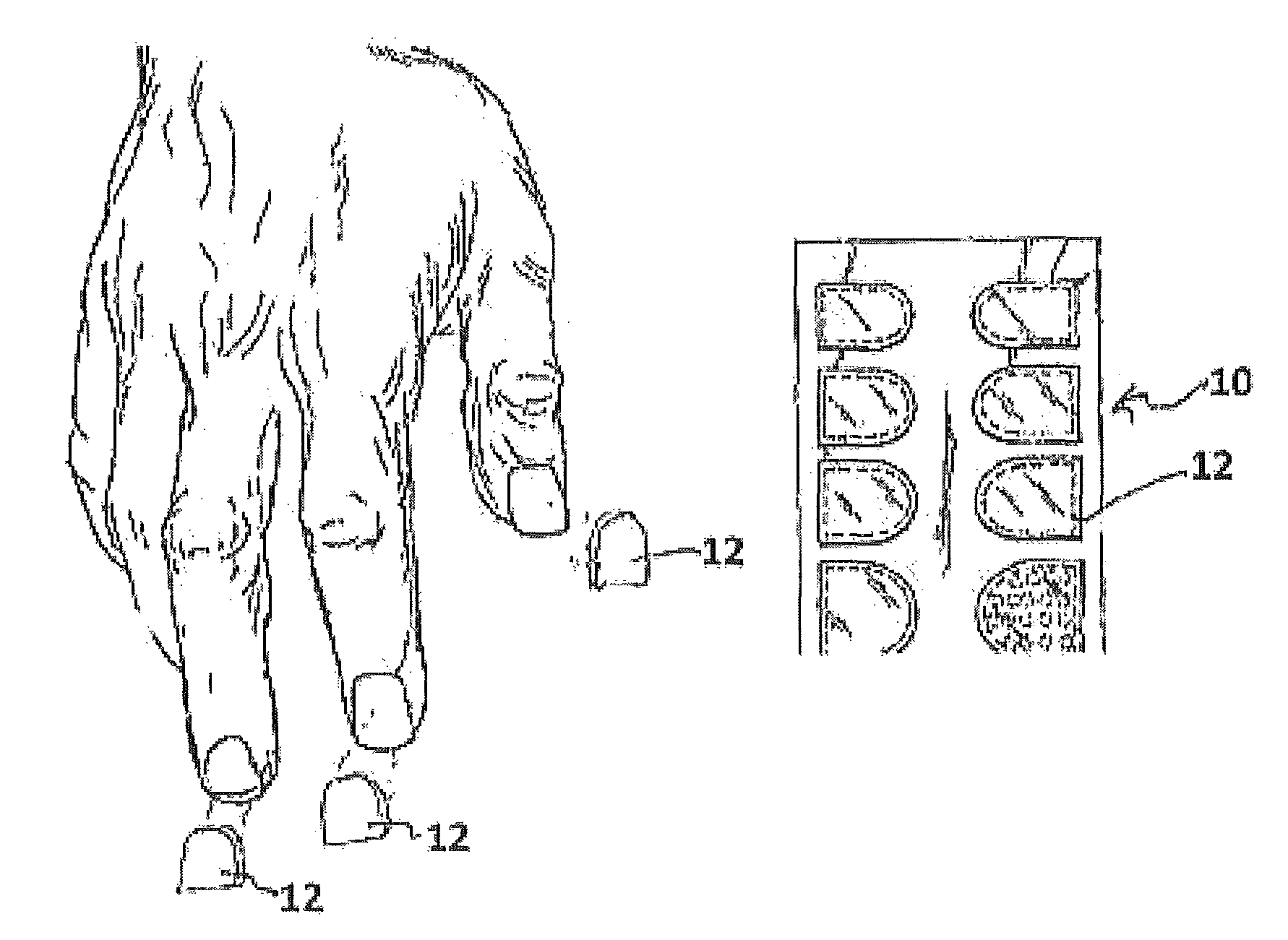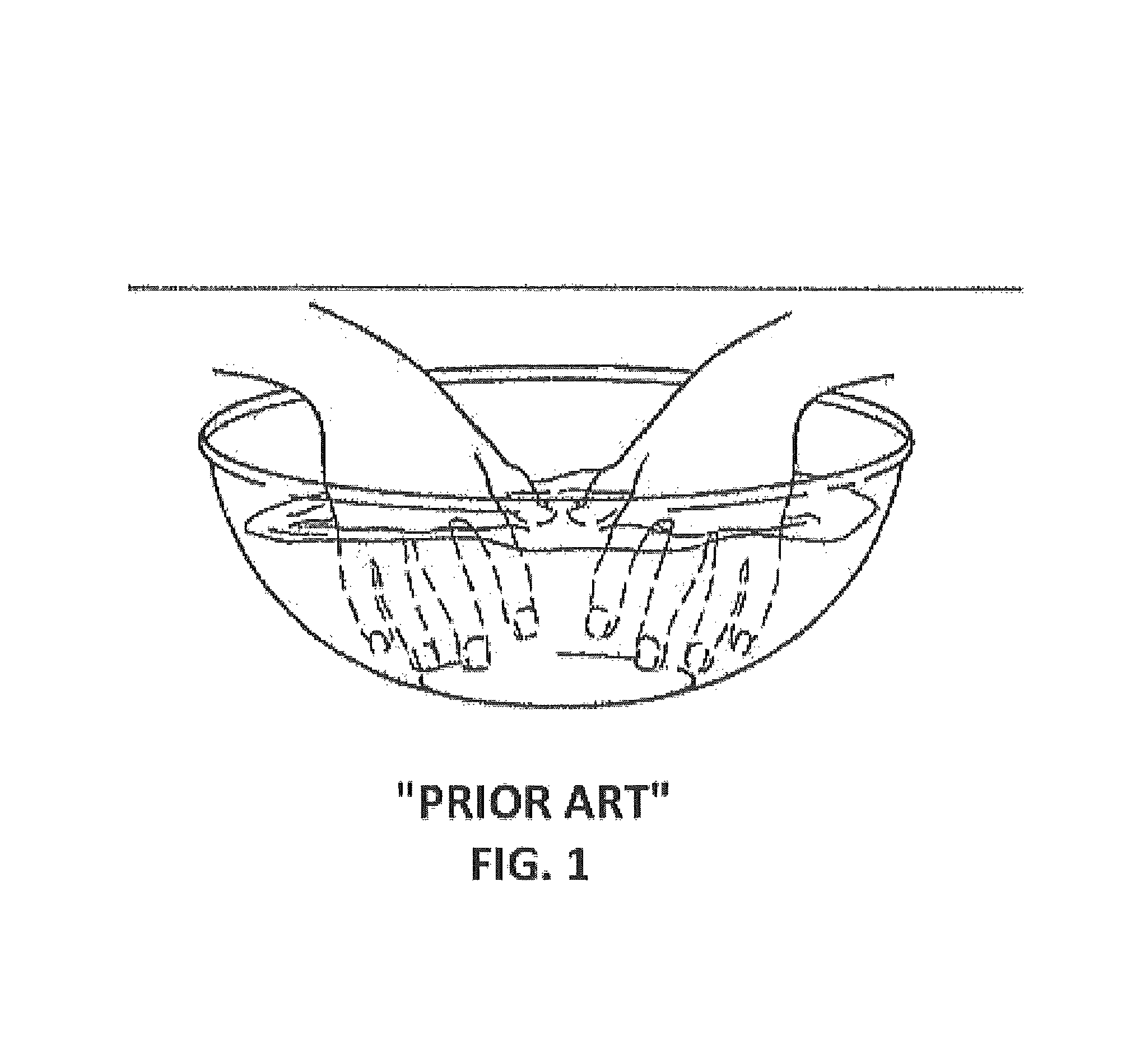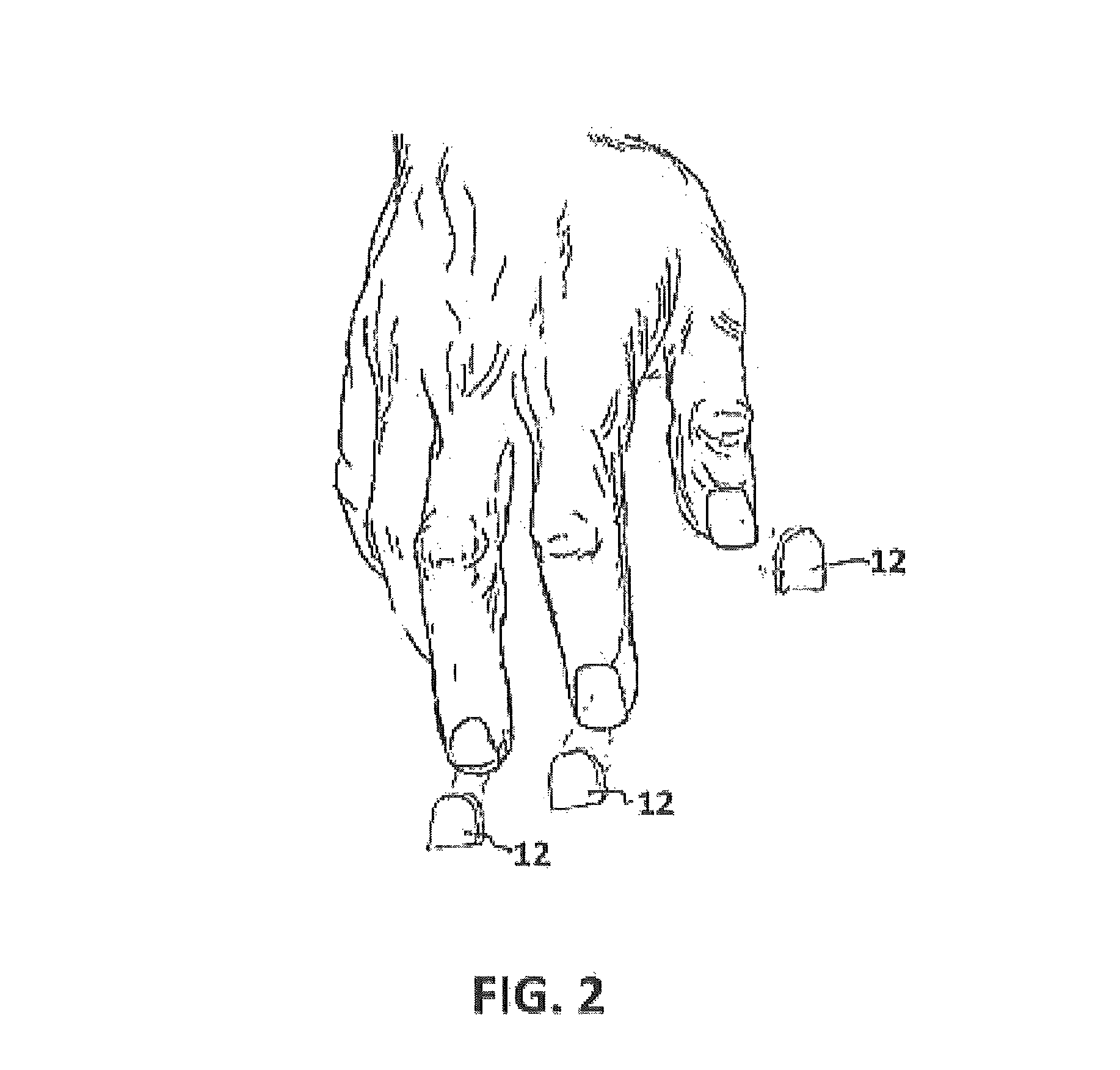Nail polish remover method and device
a nail polish and remover technology, applied in the field of nail polish remover strips, can solve the problems that solvents such as acetates, acetones and acetonitriles can weaken and/or dissolve resins
- Summary
- Abstract
- Description
- Claims
- Application Information
AI Technical Summary
Benefits of technology
Problems solved by technology
Method used
Image
Examples
Embodiment Construction
[0077]The present invention is generally a nail polish removal system shown in the figures. The system 10 includes multiple strips having associated pads impregnated with either an acetone-based or non-acetone based solvent that is effective at dissolving nail polish. Depending on what types of nails are put in contact with the pads 12, such as natural or synthetic nails, the type of solvent to be applied is significant. Although other solvent formulations are contemplated by the present invention, the solvent formulation of the preferred embodiment is preferably acetone based, as it has outperformed most non-acetone based formulations, However, the present invention is not limited to the use of acetone containing formulations and includes, for example, other formulations including a mixture of methylacetyl, dimethylketal, and deionized water. A feature of the present invention is the use of an effective amount of solvent in combination with pads 12 to achieve removal of nail polish...
PUM
 Login to View More
Login to View More Abstract
Description
Claims
Application Information
 Login to View More
Login to View More - R&D
- Intellectual Property
- Life Sciences
- Materials
- Tech Scout
- Unparalleled Data Quality
- Higher Quality Content
- 60% Fewer Hallucinations
Browse by: Latest US Patents, China's latest patents, Technical Efficacy Thesaurus, Application Domain, Technology Topic, Popular Technical Reports.
© 2025 PatSnap. All rights reserved.Legal|Privacy policy|Modern Slavery Act Transparency Statement|Sitemap|About US| Contact US: help@patsnap.com



